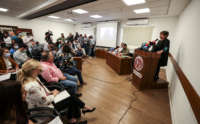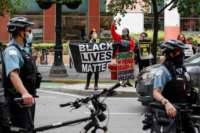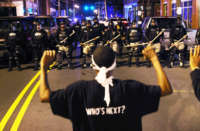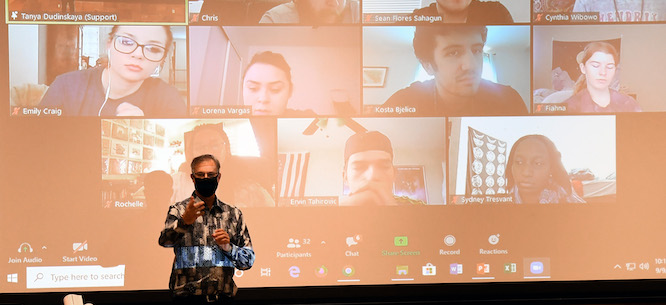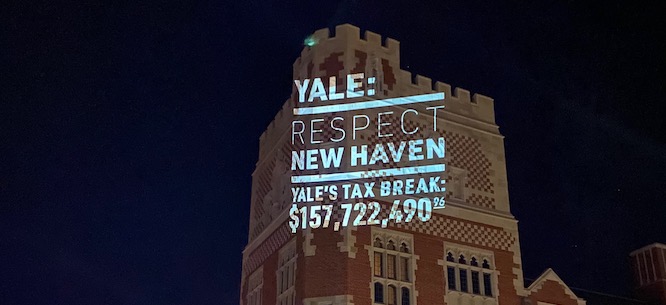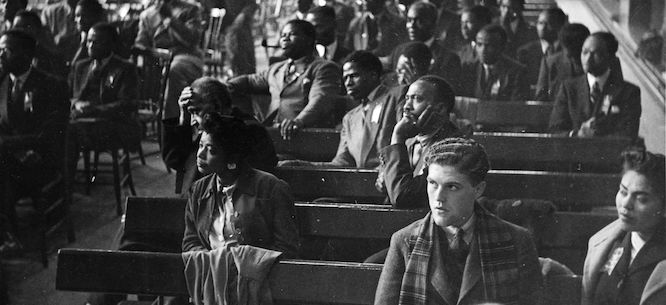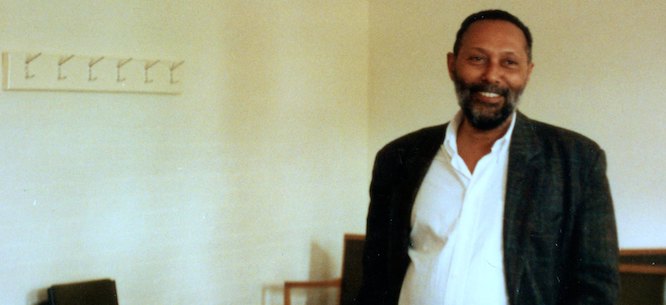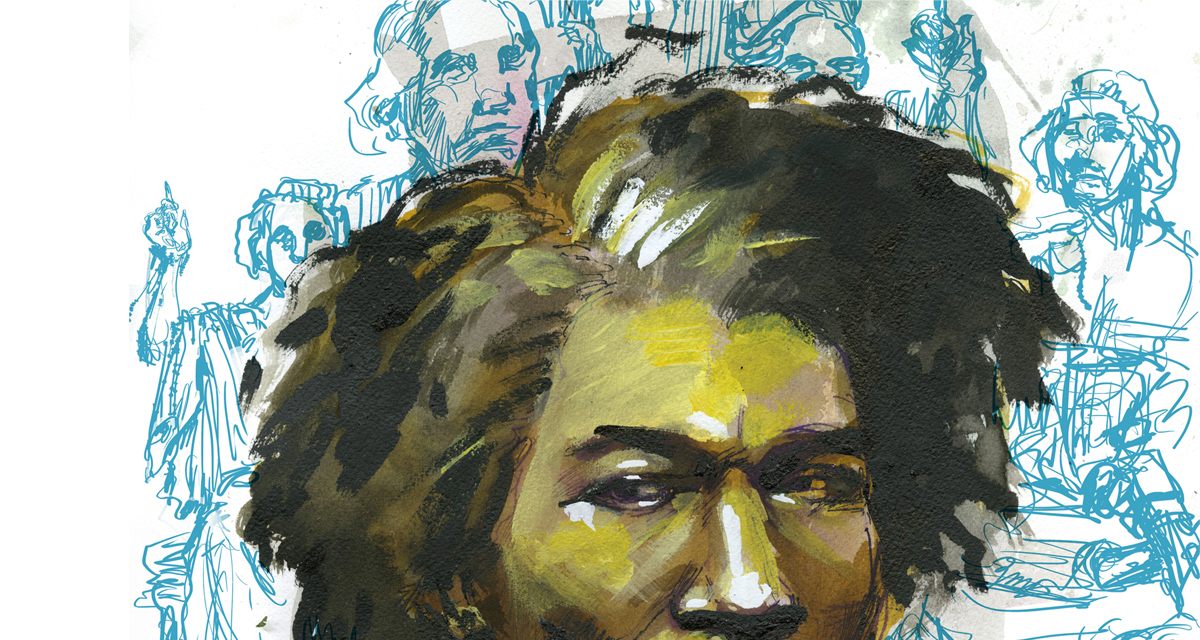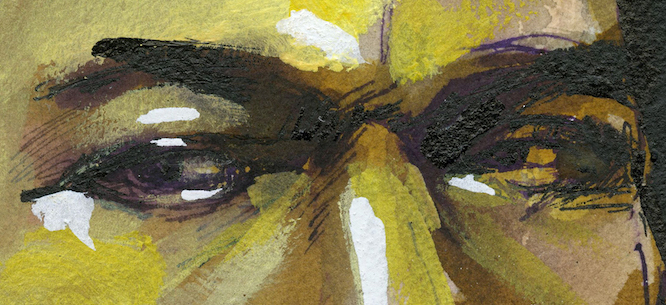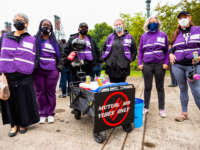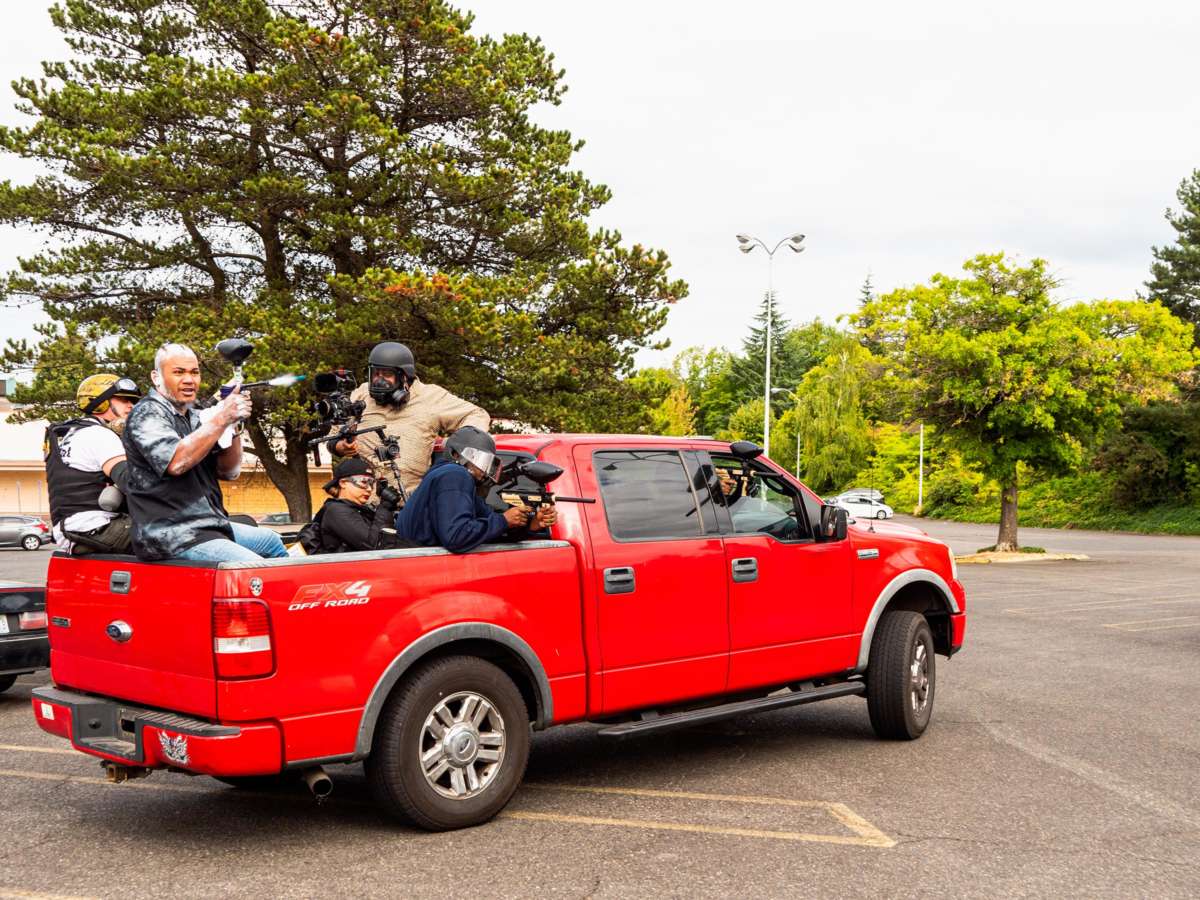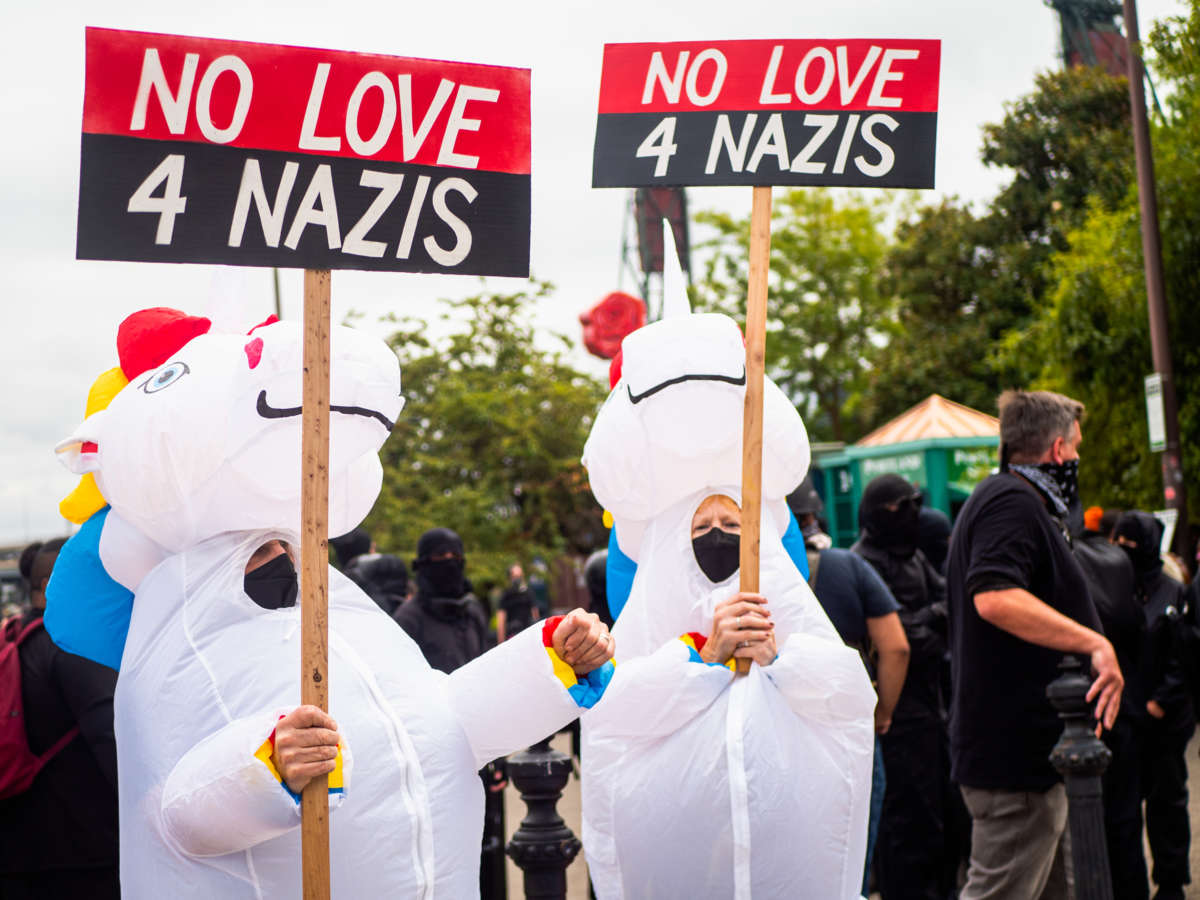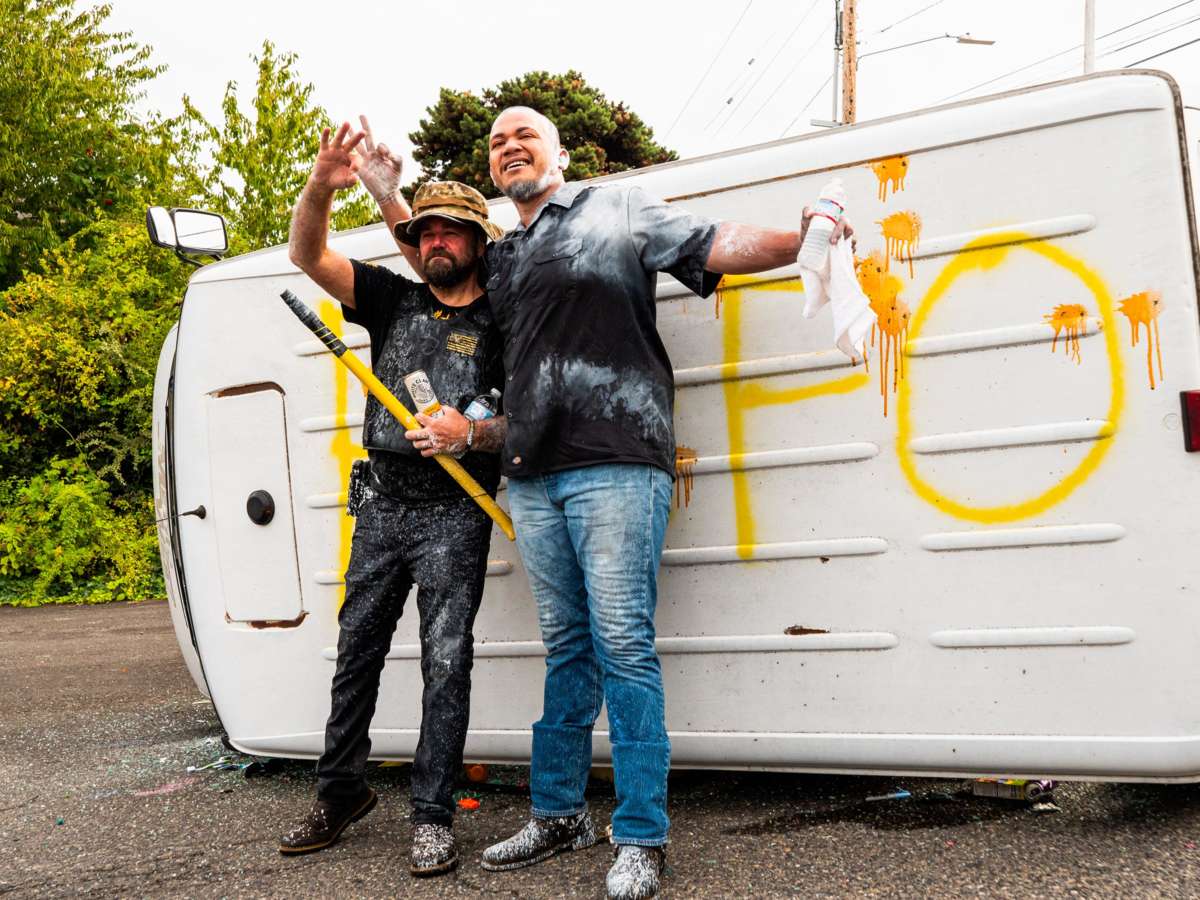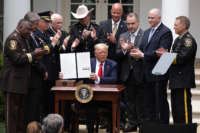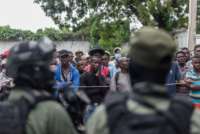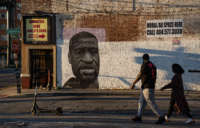
A few days ago, I was driving home from picking up mail from my university office. My GPS took me on a different route, probably the quickest. There were dark and winding streets. While driving, I noticed that my body began to tense. I found myself looking in the rearview mirror, hoping that the lights from the car in the back of me weren’t from a police officer’s car. I thought to myself: “Damn, I don’t want to be pulled over.” There are no witnesses. Then again, George Floyd had plenty. I mentally checked all the boxes: I don’t do drugs. No alcohol in my system. No broken tail lights. Registration is up to date. I’m doing the speed limit. And I don’t carry any weapons. So, why the fear? It became crystal clear: My Black body is the weapon; I am what is wrong and criminal.
I’m sure that this fear was infused with having just watched the recent video of unarmed Kyle Vinson, a 29-year-old biracial man who identifies as Black, who was pistol-whipped and choked by a white police officer in Colorado. Vinson was heard screaming, “You’re killing me!” While Vinson survived, think of the living hell, the trauma, that he will live with.
I had also recently watched the horrifying video of Elijah McClain, a 23-year-old unarmed Black man, who was also stopped by Aurora, Colorado, police officers because he “looked suspicious.” What resonates with me are his last words, which included him saying that he couldn’t breathe, that he was an introvert, that he was sorry, and that he didn’t have a gun. Unlike Vinson, McClain died. Like Trayvon Martin, had he not looked “suspicious” to Aurora’s finest, I suspect that he would still be alive.
Add to this the indelibly fixed images of the video recording of the killing of George Floyd, and this is a perfect recipe for shared trauma. Being a Black man in the U.S. is a life filled with trauma. The simple act of driving home registered deep dread and panic of imminent death at the hands of those who are ostensibly there to “protect.”
I have watched the video of George Floyd’s death in its entirety at least once. In retrospect, perhaps once was too much. For me, watching it generates multiple states: rage, fury, anger, outrage, frustration, exhaustion, defeat, fear, pessimism, grief, sadness, trauma, and deep sorrow and pain. These states of being are not experienced serially, but simultaneously, more like an immediate influx.
All these emotions are grueling to hold in one Black male body. One gets the sense that one doesn’t truly have, as W.E.B. Du Bois claimed, the “dogged strength” to keep one’s Black body from being torn asunder. Part of what fuels this pessimism, pain and sorrow is that it is ongoing, perhaps without end.
The white State, along with its deputized citizens, are relentless, and skilled at maintaining white social and civic equilibrium, white normativity and white normalcy against the “chaotic” presence of embodied Blackness. Hence, there will be another unarmed Black body killed later today, tomorrow, the day after tomorrow, the day after tomorrow’s tomorrow, etc., etc., etc., etc., etc., etc., etc., etc., etc., etc., etc., etc., etc., etc., etc., etc., etc., etc., etc., etc. The Latin, et cetera, communicates “that which remains.”
It is the to-be-killed Black male body that remains, the prone Black male corpse captured on video that remains, the tragic sense of certainty that there is a line of unnamed Black men who are targeted for death by the State and its functionaries that remains. Unnamed because we come to know their names only after their deaths. Then again, is there ever a before that is not always already an after? As scholar William Hart writes, “Trayvon Martin was dead before his deadly encounter with George Zimmerman. His execution (I use this loaded word intentionally) was a postmortem event; a ratification after the fact of the facts of black male being-in-America.”
In short, within such anti-Black male heart-rending situations, there is a type of death before physical death. Du Bois, in his deeply probing and heartfelt essay, “Of the Passing of the First-Born,” suggests that the death of his first-born child has escaped the before of that type of death behind the Veil. He writes of his son’s physical death as an escape and as a mode of freedom. Du Bois writes, “Perhaps now he knows the All-love, and needs not to be wise. Sleep, then, child, — sleep till I sleep and waken to a baby voice and the ceaseless patter of little feet — above the Veil.”
Is this what it means for us, Black men and Black boys, “to be” behind the Veil, that deep shroud that while not having a univocal meaning keeps us in “our place,” a place where the being of Black male existence is fundamentally unstable? While Du Bois is not hopeless, though he certainly knew what it meant to be unhopeful, one can feel the sheer weight of his pain and suffering (and yet a sense of joy) where he construes death as a site of refuge vis-à-vis the death of his first born. Du Bois is not bound by some morbid death wish; rather, he powerfully articulates the pain of being Black behind the Veil in a country which was/is predicated upon the ontological diminution of Black male existence. Du Bois writes, “All that day and all that night there sat an awful gladness in my heart, — nay, blame me not if I see the world thus darkly through the Veil, — and my soul whispers ever to me, saying, ‘Not dead, not dead, but escaped; not bond, but free.’”
As Black men, as Black bodies, we are, as literary scholar and intellectual Micaiah Johnson argues, the “un-killed,” which, for me, suggests a mode of existential temporal reprieve, a racially precarious mode of existence that isn’t simply precarious because all human beings are precariously finite by nature. The limit of our finitude is, as it were, accelerated by our being Black men, our finitude is sped up because of an epidermal and gendered distorted meaning that has been historically installed, reinforced through an anti-Black male framework that is predicated upon whiteness, though by no means limited to whiteness. The problem (or being a problem) is not because we are “monstrous” and “dangerous” Black men per se. Rather, our portrayal as the global “Black monster,” the frightening things of nightmares, is because of relational epistemic, libidinal, patriarchal, aesthetic, ethical, political, social, theological and material white hegemonic orders, and investments that we didn’t create. And yet, we suffer, we bleed, we weep, we mourn, we die, because we have socially inherited the death-dealing weight of the Black male imago vis-à-vis the white imaginary.
That inheritance, that indelible mark of “criminality,” often feels, though, as if it has weighed our bodies down forever. It is that feeling that I had in my car the other night — I am the problem, the forbidden. Du Bois understood the gravitas of an epidermis construed as a misdeed, a crime. He wrote, “I realized that some [white] folks, a few, even several, actually considered my brown skin a misfortune; once or twice I became painfully aware that some human beings even thought it a crime.”
The future doesn’t look any better, either. So, I am not an optimist. If in fact we are the un-killed, then we also cast a shadow forward, one that covers those Black men, Black boys, Black bodies, that have yet to be born, yet to become the un-killed. Notice how the un-killed captures something that is neither the plenitude of life nor the absolute nullification that is death. The prefix, “un,” means not. More specifically, the sense of “not” conveys how the Black body waits in line, so to speak, to be killed. To be within that mode of “not” is precisely not (quite) to be; one is paradoxically, but always terribly and revoltingly, both dead and alive. The Hamletian disjunction (“to be or not to be”) is too clear-cut, there isn’t room for a muddied, racially lived logics where, as a Black male, I am the being of not and the not of being. Hart calls this mode of being-not-being, “an in-between thing, a tertium quid.”
As Black men, we are taught to believe that it is through our agency that we are responsible for the psychic, cultural and historical debris and wreckage which surrounds our lives. These are lies, modes of projection, bad faith and scapegoating, where white people ritualistically escape what it means that their humanity is purchased at the expense of demonizing Black bodies, where the psychic architecture of civil society is what it is because some of us (too many to name) are Black. In this way, Black male racial embodiment is instrumentalized for the purpose of white America’s sense of itself as “virtuous” and “civilized.”
Our alleged self-generated debris and wreckage can best be stated in terms of someone else’s waste or refuse, which accurately signifies a foul-smelling odor of lies upon lies, a history of white shit that white people, through processes of mythopoetic obfuscation, fail or refuse to smell.
In this way, whiteness needs the Black male body for its own social ontological integrity, coherence and unity. Literary figure Toni Morrison is aware of this social ontological dependency and voraciousness that is marked through negation or the literary space of not. Through the conceptual lens provided here, I would argue in stream with Morrison that it is whiteness whereby “the American self knows itself as not enslaved, but free; not repulsive, but desirable; not helpless, but licensed and powerful; not history-less, but historical; not damned, but innocent; not a blind accident of evolution, but a progressive fulfillment of destiny.”
It is this not that resides at the core of whiteness, which forces a deep and important existential question: What is whiteness without that not, without anti-Black racism, without the Black man/person functioning, as literary figure James Baldwin would say, “in the white man’s world as a fixed star”? Perhaps the answer is painfully clear to white America — empty!
It is important to note that when I talk about whiteness, I am not speaking exclusively to those white people who identify with the KKK, the Proud Boys, neo-Nazism or the Boogaloo movement. To be white and to fight against white supremacy in its spectacular forms does not entail that one is exhaustively fighting against anti-Blackness. After all, one is still white. I would argue that to be a “good white” is more like the “benevolent” slave master who feeds me well, provides me with plenty of clothes, who doesn’t whip me, who advocates on behalf of the Black Lives Matter movement.
Yet, I would say to these “good whites”: You still don’t stop to see how my Blackness continues to function as the underside of your everyday white modes of being-in-the-world, how your unquestioned humanity is predicated upon my being as Black, as the “wretched,” the “sub-person.” I hear you. “But I am a poor white.” I get it, but that doesn’t complicate the binary. The binary remains. By your own standards, you are deemed a failed white person.
Note, though, that the conceptualization of a failed Black person or failed Blackness is not the same as a state of failed whiteness. Indeed, there is no “failed Blackness” within the white imaginary. To fail would imply that Blackness is somehow situationally inhibited to move forward based upon a real sustainable promise. Yet, there is something that is ontologically at stake here. Blackness and its relationship to failure would amount to more than a missed opportunity, more than having not received an economic promise.
Rather, Blackness is always already without genuine ontological (human) grounding. Blackness, ipso facto, is the site of nullification, where one’s humanity is not simply suspended, but structurally barred from the human (read: white humanity). After all, to be poor and white is still to be white. If one takes away poverty, whiteness remains intact. To be poor and Black is still to be Black. Take away poverty, Blackness remains intact; that is, one remains the wretched, the abject.
When I think about who I am as a Black man, I carry the history of Black people who have been murdered under death-dealing forms of anti-Blackness. When I think about George Floyd, I carry the memory of his death, the memory of his pain and suffering, the memory of him calling for his mama.
If you are white, what memories do you, or should you, carry? What is your relationship to the history of whiteness and its crimes against Black bodies?
Baldwin suggests part of the obstacle to answering these questions. He writes that “people who imagine that history flatters them (as it does, indeed, since they wrote it) are impaled on their history like a butterfly on a pin and become incapable of seeing or changing themselves, or the world.”
I think that Baldwin is correct. So, let me make it clear: White people must help carry the weight of this trauma. It is white people who must tarry with the indifference of Derek Chauvin as he killed George Floyd.
To white people I say: Chauvin is your burden; carry him. I’ve already got too many postmortem Black men and Black boys to carry. Hell, I’m just trying to drive home in peace without that traumatic weight. How does whiteness, your whiteness, enable you to breathe, and to drive without fear? More powerfully and hauntingly: What if your being able to breathe is possible because some of us cannot breathe?
If this is true, and I have come to the nontrivial conclusion that it is, then the relationship is one of parasitism; you get to breathe in the capacity of those who are “spirit-eaters.” The consumptive, gastronomical implications are intentional. Our Black spirits (Latin, spiritus or breath) are ingested so that you might live.
To any white people who are reading this, I issue this challenge: Guilt is a nonstarter; it is too easy. Just breathe. Take in the air. Feel your lungs and your chest expand. The power and violence of whiteness is just that simple; it is that normal; it is that effortless; and it is that close and invisible. That is what whiteness provides — breath, life, “innocence,” humanity, bodily expansion into a white America, a white world meant for you. It is a space within which you get to stand your ground, and where Black men are reduced to lying face down on the ground.
This post was originally published on Latest – Truthout.
